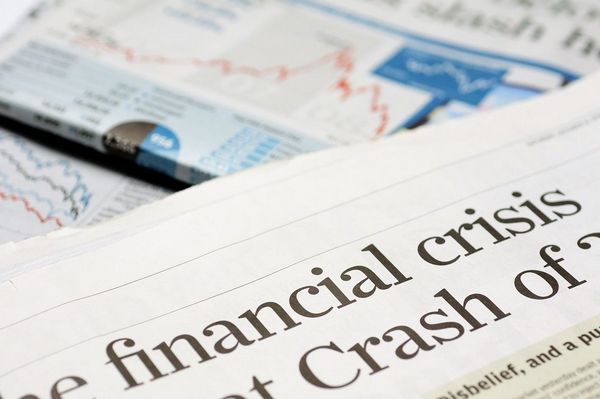Material World – Has capitalism become financialised?

The financial crisis of 2007-2008 triggered by the large-scale collapse of mortgage-backed securities in the United States was an important catalyst in promoting the view that capitalism has become ‘financialised’. Financial speculation has come to be seen not only as something increasingly autonomous with respect to the real economy (based on the production of commodities), but also as increasingly dominant in determining what happens in the latter.
The crisis was looked upon as being essentially a product of the short-sighted and irresponsible shenanigans of the financial community, aided by the New Financial Architecture (NFA) instituted in previous years and the radical financial deregulation this all entailed. In short, it was said to be the outcome of a steadily intensifying process of ‘financialisation’.
Fictitious capital
Financial speculation grew out of the traditional credit system centred on banking and became more prominent with the rise of the joint stock company. Financial securities initially took the form of stocks and bonds but in the last few decades have proliferated into a bewildering array of financial products. They are all examples of what Marx called ‘fictitious capital’, a future income stream converted into a notional lump sum. A share certificate, for instance, exists largely as a paper claim on future profits to be paid out in the form of dividends.
There is a difference between fictitious capital and an interest-bearing loan provided by a bank to an industrial capitalist to purchase means of production. In the latter case this money capital is incorporated or utilised within the process of the expanded reproduction of capital. The bank takes a cut in the form of interest payments from the increased value – or surplus value – generated at the point of production.
This is not the case with fictitious capital for the simple reason that this does not actually function as capital. That indeed is the reason why it is called fictitious capital. It is not implicated in the expanded reproduction of capital.
Because the stock market comprises a separate market for the circulation of fictitious capital this encourages the illusion that such capital is somehow independent of the real economy – or even that it constitutes ‘real capital besides the capital or claim to which they may give title’ (Marx, Capital, Vol. 3, ch.29. Penguin translation). Obviously, if fictitious capital was qualitatively identical to real capital and able to interact with the latter on equal terms, so to speak, it would then be able to generate real wealth – real profits – all by itself and would cease to be dependent on the real economy for any income it lays claim to.
But, of course, this cannot be the case for the reason so succinctly spelt out by Marx, namely that a capital cannot exist twice ‘once as the capital value of titles of ownership, the shares, and then again as the capital actually invested or to be invested in the enterprises in question’. The problem is that this is precisely what much recent commentary on the subject of crises would seem to imply.
If these ‘financialisation theorists’ are correct in what they say then this would suggest, as Stavros Mavroudeas has pointed out, that ‘financial profits are not a subdivision of surplus-value’ (and) ‘the theory of surplus-value is, at least, marginalised’ (and that) ‘consequently, profitability (…) loses its centrality and interest is autonomised from it’ (quoted in tinyurl.com/2rafv87w ).
Needless to say, if true this would have certain practical implications.
Are we debt peons?
It would seem to suggest, for instance, that more importance ought to be attached to the problem of so-called ‘secondary exploitation’ rather than the primary exploitation that occurs in the workplace (and manifests itself in the production of surplus value). In other words, according to this way of thinking, workers are to be looked upon more as debt peons than wage slaves and, consequently, more attention should be paid to measures such as keeping interest rates down, rent controls, improved trading standards and so on as a way of alleviating their situation.
It is quite true that many workers do indeed qualify as ‘debt peons’, burdened with a variety of debts such as student loans, personal loans, and mortgages. However, their status as debt peons is essentially a derivative one stemming from the economic precariousness they experience as wage workers. It is because of this that they fall into debt. They don’t become wage slaves in order to pay off their debts as debt peons. If anything, it is often the other way round.
In any event, the basic premise of the financialisation theorists is questionable. The illusion that financial gains can somehow become autonomous with respect to the real economy can only be sustained if you focus on the micro-level – the individual investor of fictitious capital.
If an investor sold their shares on the stock market then, of course, they might very well realise a capital gain and be able to purchase tangible goods – real wealth – with the money they received. Their fictitious capital would not have been implicated in the production of real wealth and yet would have resulted in an augmentation of the investor’s own real wealth.
However, if every other shareholder followed suit and simultaneously sought to dispose of their shares as well then the price of these shares would plummet to zero thereby demonstrating their essentially fictitious character. Of course, this hypothetical scenario is inherently absurd – after all, to sell your shares you need someone to buy them – but it does bring out the point that fictitious capital is not about value creation at all. It’s at least partly about speculation and this was spectacularly demonstrated in the case of the 2007-8 financial crisis when the fictitious value of certain financial securities simply evaporated.
ROBIN COX
